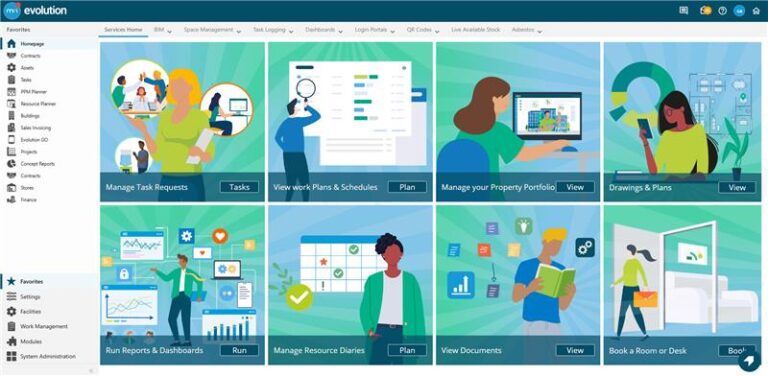Why is communication important in management and leadership?
Communication is essential for effective functioning in every part of an organization. Although marketing, production, finance, personnel, and maintenance departments may receive direction from corporate goals and objectives, communication links them together and facilitates organizational success. The importance of effective communication for managers cannot be overemphasized for one specific reason: everything a manager does, involves communicating. Communication is needed to increase efficiency, satisfy customers, improve quality, and create innovative products.
Effective communication is so important for organizational success that not only managers, but also their employees must be effective communicators. One role of a manager is to help employees improve their communication skills. When all members of a team, department, or organization are able to communicate effectively with each other and with people outside their group, they are much more likely to perform well. The successful manager, therefore, needs effective communication skills.
What is communication?
Communication is the sharing of information between two or more individuals or groups to reach a common understanding. The most important part of this definition is that the information or ideas conveyed must be understood. To see what this definition means in practice, consider giving or receiving incomplete information. With only a partial understanding, problems will occur.
Good communication is often incorrectly defined by the communicator as agreement instead of clarity of understanding. If someone disagrees with us, we may often assume the person just did not fully understand our position; but a person can clearly understand us and simply not agree. In fact, when a manager concludes that a lack of communication must exist because a conflict between two employees has continued for a long time, a closer look often reveals that, to the contrary, plenty of effective communication is going on. Each fully understands the other’s position, but their communication does not necessarily produce agreement.
What are the two phases of the communication process?
The communication process consists of two phases.
- the transmission phase
- the feedback phase
In the transmission phase, information is sent from one individual or group-the sender-to another individual or group-the receiver. In the feedback phase, a common understanding is assured.
What is the transmission phase of communication?
To begin the transmission phase, the sender decides on the message, which is the information the sender wants to communicate. The sender translates the message into symbols or language, a process called encoding. Once encoded, a message is transmitted through a medium to the receiver. The medium is simply the pathway, such as a phone call or letter, through which an encoded message is transmitted to a receiver.
What is the feedback phase of communication?
The feedback phase is initiated by the receiver, who becomes the new sender. The receiver decides what message to send to the original sender (now the new receiver), encodes it, and transmits it through a chosen medium. The message might contain a confirmation that the original message was received and understood, or a restatement of the original message to make sure that it was correctly interpreted, or a request for more information.
How does perception impact communication?
Perception is the process through which people select, organize, and interpret sensory input to give meaning and order to the world around them. Perception is inherently subjective and influenced by people’s personalities, values, attitudes, moods, experience, and knowledge. When senders and receivers communicate with each other, they are doing so based on their own subjective perceptions.
Perception plays a central role in communication and affects both transmission and feedback. The encoding and decoding of messages and even the choice of a medium hinge on the perceptions of senders and receivers.
What is nonverbal communication?
The encoding of messages into words, written or spoken, is verbal communication. Nonverbal communication includes all messages encoded without using written or spoken language. Nonverbal communication shares information through facial expressions, body language, and even style of dress. Physical elements such as buildings, office furniture, and space also convey messages. Office arrangements convey status, power, and prestige.
Pay close attention to nonverbal behaviors when communicating. Learn to coordinate your verbal messages with your nonverbal behavior and to be sensitive to what your employees, managers, and peers are saying nonverbally. It is easy to underestimate the powerful impact that nonverbal communication has on the perceptions of others. Nonverbal messages can undermine contrary verbal or written messages. A message can be given meaning only in a context, and cues or signals are easy to misinterpret.
When should I use one-to-one (face-to-face) communication?
Most of a manager’s communication time is spent one-on-one, or face-to-face, with employees. Face-to-face communication provides immediate feedback and is the richest information medium because of the many information channels available through voice, eye contact, posture, blush, and body language. It is the appropriate medium for delegating tasks, coaching, disciplining, instructing, sharing information, answering questions, checking progress toward objectives, and developing and maintaining interpersonal relations. Managers also spend one-on-one, face-to-face time communicating with their managers, colleagues, and peers.
When should I communicate via the telephone?
Telephone or spoken communications electronically transmitted provide only the cue of voice inflection, not the visual cues available from face-to-face interaction. The amount of time spent on the telephone varies greatly with the job. Before making any call, you should always set an objective and write down what you plan to discuss. Use the paper to write notes during the call. The telephone is the appropriate medium for quick exchanges of information and for monitoring progress. It is especially useful for saving travel time, but it is inappropriate for personal matters like discipline.
When should I use written communication?
Individually addressed written communications convey only the cues written on paper and are slow to provide feedback, although they can be personalized. Written communications meant for a group of people are the lowest in richness, as they are not focused on a single receiver, use limited information cues, and do not permit easy feedback. They do, however, provide documentation that the information has been provided.
You and your employees can ask certain questions before sending messages inside and outside the organization.
How does technology affect communication?
Exciting advances in information technology have dramatically increased the speed of communication. You can now communicate more easily with your teams and can access information more quickly to make decisions. In order to be competitive, you should keep abreast of the latest advances in information technology. But you should not adopt these or other advances without first carefully considering whether and how the technology advance in question might improve communication and performance in your particular groups, teams, departments, or organization.
What are the different types of communication networks?
The pathways along which information flows throughout an organization are called communication networks. The type of communication network that exists in a group depends on the nature of the group’s tasks and the extent to which group members need to communicate with each other in order to achieve group goals. Four kinds of communication networks that can develop in groups and teams are:
- wheel
- chain
- circle
- all-channel
This article is excerpted from BOMI International’s Effective Management Reference Guide. The guide can be purchased by calling 1-800-235-2664, or by visiting www.bomi.org.




